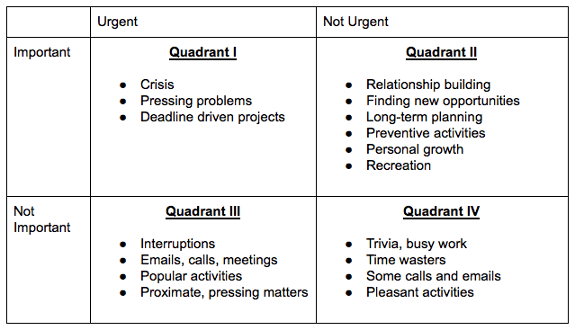https://i1.wp.com/toolguyd.com/blog/wp-content/uploads/2021/06/Husky-Steel-Hammer-Top.jpg?resize=600%2C708&ssl=1

I’ve been working on some DIY tool kit buying guides, with Home Depot sponsoring the project (thank you!). This is something I’ve been eager to do for a while, and a couple of reader requests finally pushed this to the front of my attention.
There’s one tool that everyone needs – a good hammer.
I feel that, for most users, a 16 ounce claw hammer is a good place to start, and sometimes a 20 ounce rip claw hammer is a good alternative.
In part two of this series – 5 DIY Tool & Workshop Upgrades Everyone Will Love – I posted about the Husky 27 oz dead blow hammer, a lighter weight dead blow that I have been really enjoying using. That’s definitely on my recommendations list, but everyone also needs a good claw hammer.

I picked up a hammer on my first shopping run, and then a couple of others on my second and third trips to Home Depot.
There’s an inexpensive Anvil/Stanley – the hammers look to be identical but branded differently depending on the store – for testing out for the lowest budget tier, a Dewalt 20 oz I like as a general good-for-everyone quality recommendation (I’ve used this one before), and I also wanted to test out this Husky steel-handle hammer.
I should point out that I own or have tested nearly all of these tools before, but I needed current versions to ensure the their quality hasn’t changed, and for clean photo samples.

Frankly, this Husky steel handle claw hammer surprised me, as it wasn’t part of the plan.
I picked up an Estwing to mirror my preference for lighter nail hammers for more casual tasks, the Dewalt as the more premium experience option, and the entry-level wood-handled hammer as the “for the person who doesn’t want to spend a lot” option. If any further recommendations or suggestions were needed, I have a pile of highly-regarded hammers in my own kit and in my test box from last year.
There were two rows of this Husky hammer at the store, but I didn’t see the price. I picked one up and wow, it’s lighter than I thought. A couple of air swings later, and wow, I like the balance of this hammer.
Not all 16 oz hammers feel the same, this one had a lighter feel to it, or rather a lighter and easier swing.
It looks like the hammers were just put out, and they were waiting for a pricing tag. I looked it up on my phone – $10.
$10? That cannot be right. $10 for a fiberglass-handle hammer? Maybe, but that one’s $12. This steel-handled hammer cannot be $10.
I added it to my bucket, was surprised to see it ring up at $10, and brought it home.
Wow. This is the bargain of the year.

There’s something wrong with this price – I’m sure of it. A $10 hammer with a magnetic nail-starter? That seems unheard of.
What’s more, it was *perfectly* implemented.
A couple of years ago, Kobalt came out with a then-new high velocity hammer. Since then, if I’m at a store and checking out claw or rip hammers that have built-in nail-starter magnets, I check out all the hammers in a row to see if they’re installed properly and consistently.
Aside from some loose and easily cleanable metal shavings, everything here looked good.

The bent nail claw looked good, with nothing notable to report.

Ah, I found the catch.
So when looking through the hammers on the shelf, there seemed to be different levels of grinding attention given to the transition between the strike face and central body. Meaning, some hammers had more defined (sharper-looking) transition steps, while others were finished a little better.
Basically, some hammers are a little prettier than others. This doesn’t seem consequential at all, and so I grabbed a hammer and was done with it.
I brought the hammer home, drove in some test nails, and WOW, it was a life-changing experience! Sorry, that’s not true. This is a well-made hammer and I like its balance and feel. I wouldn’t call it amazing, but it’s also definitely not a generic nail hammer.

I also like the axe-style handle flare, a feature that helps to keep my hand on-position. This can be a polarizing opinion, with some people for it, others against it, and I’m sure there are plenty of people who don’t have any preference.
I’ve been trying to figure out how to plainly discuss this hammer, and it’s been difficult. Quite simply put, this is the best hammer I’ve ever used for under $20.
Was the price a mistake, with someone at Home Depot forgetting to add a “1” in front of the $9.97? Is this a special buy? How is this just $10?! I cannot figure it out!
I cannot formally review it yet, as that might take a few months of project use, but initial testing showed me that it won’t disintegrate upon contact with a nail – not that this was ever a real concern.
I prefer 16 ounce nail hammers to have a claw hammer – as opposed to a rip claw. Steel handles are more durable than other materials, and this one doesn’t seem to have added heft. I like the weight, balance, and feel. There’s a magnetic nail-starter, a typically more premium feature found on pricier hammers. The handle is great, the claw is great, everything about this hammer says “this is a good hammer.”
The only cost-cutting measure seems to be slight inconsistencies involving a cosmetic transition grind.
Wait – is the strike face malformed? No – it’s as perfectly circular as I’ve seen. (That’s always equally disappointing and amusing, whenever I check a hammer at a store and find its strike face to be oval in shape, but not this one.)
So… yeah, Home Depot has hidden this (new?) Husky steel-handled hammer on store shelves, and at just $10 it’s an absolute steal.
I cannot find any other name-brand steel-handled hammer even close to this price.
I’m giving up on trying to understand it.
So how do I share about this hammer? I’m embarrassed to say it’s taken me a couple of weeks and I still cannot find an eloquent way to sum everything up.
On one hand, this is a good hammer – I put it in my shopping bucket before I verified the price. On the other hand, this is a fantastic bargain at just $10. How can it be both?
Check it out at your next visit to Home Depot, maybe even give it a controlled air swing (something I hope becomes commonplace so it’s less unusual when I do it), and tell me what you think.
Price: $9.97
Buy Now via Home Depot
Lastly, I should point out that Husky has a lifetime “no receipt required, no questions asked” hand tool warranty.
 ToolGuyd
ToolGuyd


















